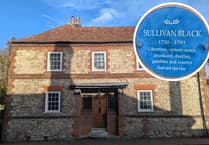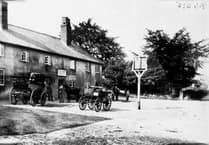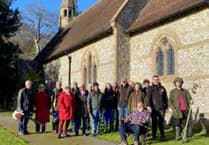In a small East Hampshire village near Petersfield lies the grave of a remarkable war hero whose act of valour at the height of one of the First World War's bloodiest battles earned him the Victoria Cross.
Born in 1882, Eric ‘Kipper’ Gascoigne Robinson grew up with a strong naval influence. His father, chaplain at the Royal Naval College in Greenwich, imbued in him a respect for service that would shape his future.
Educated at St John’s School, Leatherhead, Robinson joined HMS Britannia at age 15. His naval career advanced quickly, and he gained a reputation for fearlessness while participating in the suppression of the Boxer Rebellion in China.
Here, he earned his first commendations and was mentioned in dispatches, foreshadowing a career punctuated by acts of heroism.
Kipper’s most famous exploit occurred during the Gallipoli campaign. As a lieutenant commander, he volunteered to lead an assault on a Turkish gun battery at Orkanieh, a fortified position on the southern Dardanelles coast.
His friend and mentor, Roger Keyes, appointed him to this perilous task. Donning conspicuous white naval attire, Robinson led his small team, braving intense Turkish gunfire.
When Turkish snipers began targeting his men, Robinson took it upon himself to advance alone, darting across exposed ground under fire to destroy the main gun and its supporting emplacements.
Admirals on nearby ships observed his courage, with some recalling how he seemed to stroll casually through the battlefield, defying gunfire in what would later be described as an almost nonchalant manner.
For his bravery, Robinson received an immediate recommendation for the Victoria Cross, which he was awarded later that year.
Not long after this, Robinson volunteered for another high-stakes mission involving the retrieval of the submarine HMS E15, which had run aground near Turkish fortifications.
Leading two picket boats armed with torpedoes, Robinson entered Turkish-controlled waters at night, facing relentless artillery fire.
Despite the danger, he managed to locate the stranded submarine, aiding in its destruction to prevent its capture. His success on this mission cemented his reputation for audacious bravery and earned him rapid promotion.
Wounded during his time on the Gallipoli Peninsula, Robinson returned to England to recover, but soon rejoined the Mediterranean fleet, where he continued to serve with distinction.
His expertise with minesweeping operations became essential as the Allied forces struggled to navigate through Turkish defenses. Robinson’s minesweeper sustained significant damage during these operations, yet he continued undeterred, his vessel often taking fire without withdrawing.
Later in the war, he commanded missions in Egypt and Palestine, earning further honours and gaining a notable reputation within naval circles.
Following the war, Robinson continued his service, participating in the Russian Civil War as part of an Allied intervention force in the Caspian Sea. During the Battle of Alexandrovsky Fort, Robinson demonstrated tactical brilliance by forcing enemy vessels into retreat, a manoeuvre that was instrumental in the success of his squadron.
He later received the Russian Order of St Anne, an honour rarely granted to foreign officers, recognising his contributions to the Allied effort.
Though he retired in 1933 as a Rear Admiral, Robinson returned to duty when the Second World War broke out, aged 57. He commanded Atlantic convoys, ensuring the safe passage of supply ships across dangerous waters.
Health issues eventually forced him to retire in 1941, but his service continued in a strategic role as the Naval Officer in Charge at Dundee, where he provided vital support to the Allied war effort.
Tragically, he lost his son, Midshipman Edward Robinson, when HMS Neptune was sunk. For his wartime service, Robinson was awarded the Norwegian King Haakon VII’s Freedom Cross and the French Légion d'honneur, alongside other commendations.
In 1965, Robinson passed away at the Haslar Naval Hospital. Despite his many achievements, his grave remained unmarked for decades.
Finally, in 1998, the Naval VC Association erected a headstone at St John's Church in Langrish, and today, a commemorative stone in Greenwich also serves as a permanent reminder of Kipper Robinson’s remarkable life.








